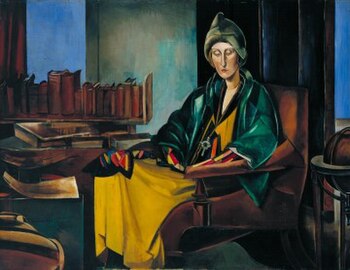
Walter Richard Sickert was a German-born British painter and printmaker who was a member of the Camden Town Group of Post-Impressionist artists in early 20th-century London. He was an important influence on distinctively British styles of avant-garde art in the mid and late 20th century.

Percy Wyndham Lewis was a British writer, painter and critic. He was a co-founder of the Vorticist movement in art and edited BLAST, the literary magazine of the Vorticists.

Vorticism was a London-based modernist art movement formed in 1914 by the writer and artist Wyndham Lewis. The movement was partially inspired by Cubism and was introduced to the public by means of the publication of the Vorticist manifesto in Blast magazine. Familiar forms of representational art were rejected in favour of a geometric style that tended towards a hard-edged abstraction. Lewis proved unable to harness the talents of his disparate group of avant-garde artists; however, for a brief period Vorticism proved to be an exciting intervention and an artistic riposte to Marinetti's Futurism and the post-impressionism of Roger Fry's Omega Workshops.
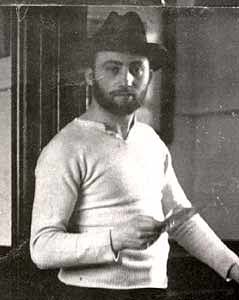
David Garshen Bomberg was a British painter, and one of the Whitechapel Boys.

Roger Eliot Fry was an English painter and critic, and a member of the Bloomsbury Group. Establishing his reputation as a scholar of the Old Masters, he became an advocate of more recent developments in French painting, to which he gave the name Post-Impressionism. He was the first figure to raise public awareness of modern art in Britain, and emphasised the formal properties of paintings over the "associated ideas" conjured in the viewer by their representational content. He was described by the art historian Kenneth Clark as "incomparably the greatest influence on taste since Ruskin ... In so far as taste can be changed by one man, it was changed by Roger Fry". The taste Fry influenced was primarily that of the Anglophone world, and his success lay largely in alerting an educated public to a compelling version of recent artistic developments of the Parisian avant-garde.

Lucian Michael Freud was a British painter and draughtsman, specialising in figurative art, and is known as one of the foremost 20th-century English portraitists. He was born in Berlin, the son of Jewish architect Ernst L. Freud and the grandson of Sigmund Freud. Freud got his first name "Lucian" from his mother in memory of the ancient writer Lucian of Samosata. His family moved to England in 1933, when he was 10 years old, to escape the rise of Nazism. He became a British naturalized citizen in 1939. From 1942 to 1943 he attended Goldsmiths' College, London. He served at sea with the British Merchant Navy during the Second World War.

Dame Edith Louisa Sitwell was a British poet and critic and the eldest of the three literary Sitwells. She reacted badly to her eccentric, unloving parents and lived much of her life with her governess. She never married but became passionately attached to Russian painter Pavel Tchelitchew, and her home was always open to London's poetic circle, to whom she was generous and helpful.

Christopher Richard Wynne Nevinson was an English figure and landscape painter, etcher and lithographer, who was one of the most famous war artists of World War I. He is often referred to by his initials C. R. W. Nevinson, and was also known as Richard.
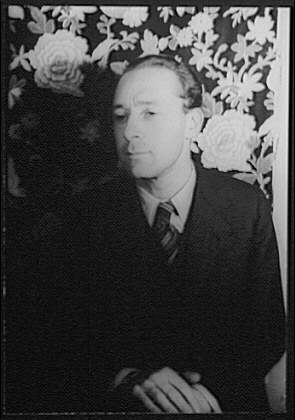
Pavel Fyodorovich Tchelitchew was a Russian-born surrealist painter, set designer and costume designer.
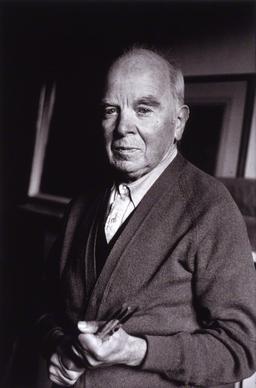
William Patrick Roberts was a British artist.

Gino Severini was an Italian painter and a leading member of the Futurist movement. For much of his life he divided his time between Paris and Rome. He was associated with neo-classicism and the "return to order" in the decade after the First World War. During his career he worked in a variety of media, including mosaic and fresco. He showed his work at major exhibitions, including the Rome Quadrennial, and won art prizes from major institutions.

Sir William Rothenstein was an English painter, printmaker, draughtsman, lecturer, and writer on art. Though he covered many subjects – ranging from landscapes in France to representations of Jewish synagogues in London – he is perhaps best known for his work as a war artist in both world wars, his portraits, and his popular memoirs, written in the 1930s. More than two hundred of Rothenstein's portraits of famous people can be found in the National Portrait Gallery collection. The Tate Gallery also holds a large collection of his paintings, prints and drawings. Rothenstein served as Principal at the Royal College of Art from 1920 to 1935. He was knighted in 1931 for his services to art. In March 2015 'From Bradford to Benares: the Art of Sir William Rothenstein', the first major exhibition of Rothenstein's work for over forty years, opened at Bradford's Cartwright Hall Gallery, touring to the Ben Uri in London later that year.

Reginald John "Rex" Whistler was a British artist, who painted murals and society portraits, and designed theatrical costumes. He was killed in action in Normandy in World War II. Whistler was the brother of poet and artist Laurence Whistler.

Boris Vasilyevich Anrep was a Russian artist, active in Britain, who devoted himself to the art of mosaic.
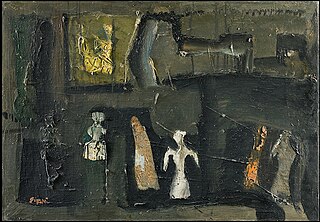
Mario Sironi was an Italian Modernist artist who was active as a painter, sculptor, illustrator, and designer. His typically somber paintings are characterized by massive, immobile forms.
Edwin Curtis Moffat was a London-based American abstract photographer, painter and modernist interior designer.

Dynamism of a Dog on a Leash, sometimes called Dog on a Leash or Leash in Motion, is a 1912 oil painting by Italian Futurist painter Giacomo Balla. It was influenced by the artist's fascination with chronophotographic studies of animals in motion. It is considered one of his best-known works, and one of the most important works in Futurism, though it received mixed critical reviews. The painting has been in the collection of the Albright–Knox Art Gallery since 1984.

Paul George Konody was a Hungarian-born, London-based art critic and historian, who wrote for several London newspapers, as well as writing numerous books and articles on noted artists and collections, with a focus on the Renaissance. A recognized expert on the art of the Renaissance, he was lauded for his evaluation of claims of authenticity for works from that period, correctly debunking Wilhelm von Bode's assertion that a bust of Flora was sculpted by Leonardo da Vinci. During World War I, Konody became interested in the representation of war in the arts, and directed an effort to commemorate Canadian participation in that war.
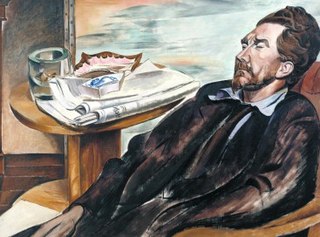
Ezra Pound is a portrait of the American poet Ezra Pound, made by his friend Wyndham Lewis in 1939.
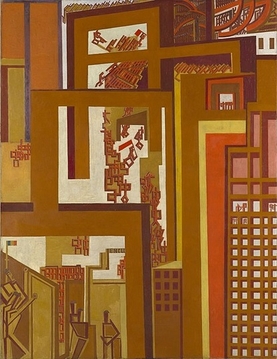
The Crowd is a 1914–1915 abstract painting by the English artist Wyndham Lewis. It is an example of Vorticism, a modern art movement Lewis created. It was first exhibited in March 1915 with The London Group. At one point, it was known as Revolution, due to a misunderstanding that it was inspired by the 1917 October Revolution in Russia. Since 1964, it is in the collection of Tate in London.
